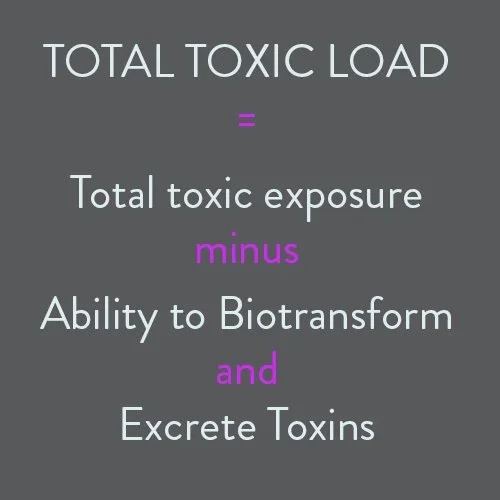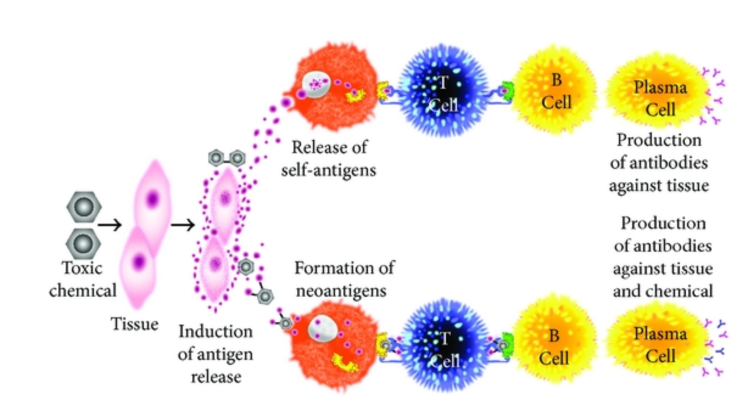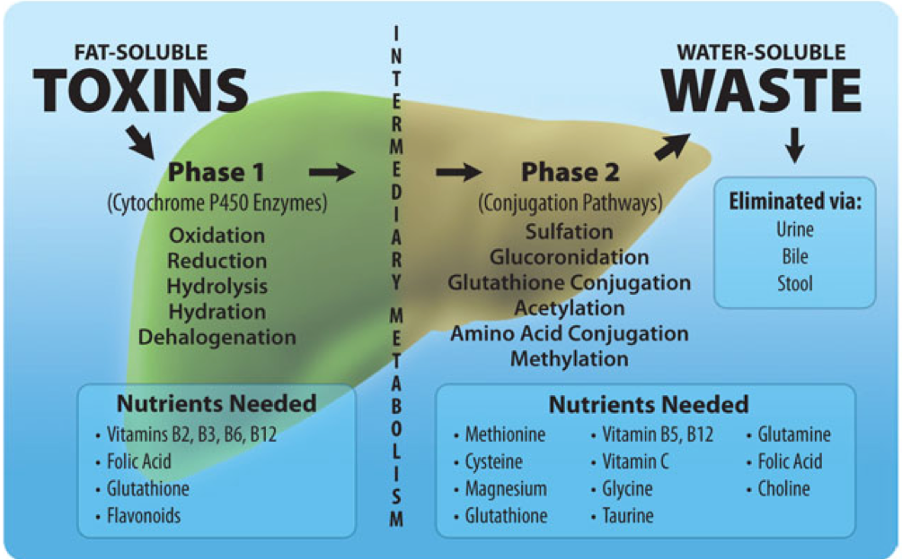Detox Debunked
Firstly learning and understanding how our body is set up naturally to detox (the proper term is actually biotransformation…. but it isn’t quite as catchy!) and based on that knowledge, supporting the organs and systems that are equipped with the 100’s of enzymes and microbiomes to very efficiently biotransform all those toxins for you, namely the gut, liver, kidneys and lymph. Supporting this important function is vital for hormone equilibrium, improving fatigue, reducing gut symptoms and reducing an overall toxic burden, by doing so the road to a long and vitality filled life is yours! And all of this is in a positive affirming way - without the guilt.
What is detoxification?
The whole purpose of detoxification (I will use this term for ease of understanding rather than biotransformation) is to convert chemicals - in the form of our own hormones that are created endogenously as well as exogenous chemicals that we breathe in or consume in the form of pollutants, cosmetics, and pesticides into metabolites that the body can eliminate by making them water soluble.
The accumulation of these chemicals, without being efficiently biotransformed is referred to as one's “total body burden” of toxic substances, and can interact to cause physiological dysfunction, which can lead to chronic illnesses in susceptible individuals. Susceptibility is largely defined by an individual's ability to biotransform and eliminate exogenous and endogenous toxins or chemicals.
The liver is the organ that does the heavy lifting in biotransformation, still, your small intestine, brain, heart, lungs and skin also which are heavily nutrient dependent, thus ongoing consumption of amino acids, vitamins, minerals and other supportive compounds (e.g. sulforaphane) are necessary to facilitate optimal biotransformation/detoxification.
Phase I
All chemicals are exposed to a large superfamily of enzymes termed the CYP450 system, requiring heme (iron) and NADPH as cofactors, each responsible for metabolising thousands of internal and external substances. Some CYPs metabolise only one or very few substrates while others are responsible for metabolising multiple substrates. The primary role of the CYP450 system and phase 1 is to- is the slight change of the structure through oxidation (predominantly), reduction and hydrolysis reactions.
Other major Phase I enzymes outside of the CYP450 system include:
alcohol dehydrogenase (ADH) and aldehyde dehydrogenase (ALDH) - responsible for the two- part break-down of alcohol in the body
the monoamine oxidases (MAOs) - responsible for breaking down dopamine, noradrenaline and serotonin
paraoxonase 1 (PON1) - breaks down pesticides and oxidised lipids
Some of the enzymes exhibit genetic polymorphisms and these impact the efficacy and speed (fast or slow) of their action. For example the most common alcohol metabolism pathway involves two (Phase I) enzymes:
Alcohol dehydrogenase (ADH) - which metabolises alcohol to acetaldehyde, a highly toxic substance and known carcinogen
Aldehyde dehydrogenase (ALDH) - metabolises acetaldehyde to less active byproduct acetic acid.
A polymorphism on the ADH gene/ enzyme increases ADH enzyme activity and a polymorphism on the ALDH reduces ALDH enzyme activity which can cause toxic acetaldehyde to build up - commonly called a hangover of massive proportions!
As well, certain foods, chemicals and drugs can inhibit or enhance an enzyme. CYP3A4 for example is the most common CYP isoenzyme and metabolizes 50% of drugs, present in the liver and gut mucosa. The following drugs / foods are inhibitors of CYP3A4:
The AZOLES (antifungal agents - fluconazole, itraconazole, voriconazole, posaconazole, and isavuconazole) and the imidazoles (ketoconazole)
Erythromycin
Grapefruit Juice
Acute Alcohol
So if taking these, they down regulate the metabolism of any drug that uses this pathway --> thereby increasing the plasma level of the drug --> which can lead to toxicity.
Phase II
Reactions are called conjugation reactions, where the altered molecule is added to the reactive site of the phase I metabolite. The result is a conjugated metabolite that is now more water soluble, and ready to be eliminate via the bile, gut, kidney. When chemicals go through phase 1, often they are more reactive, as a free radical before they become conjugated by phase 2 pathways, as shown here.
These free radicals damage tissue, become stored in adipose (fat) tissue and deplete our own antioxidant reserves. In addition, when these chemicals are not eliminated efficiently they will bind to albumin and can become neoantigens, and can set off an inflammatory response that can result in autoimmunity, attacking self tissue of course fatigue!
In the article “A Potential Link between Environmental Triggers and Autoimmunity”, the author writes:
After reviewing a total of 103 articles and the inclusion of 33 in the meta-analysis, it was concluded that exposure to organic solvents was associated with systemic sclerosis, primary systemic vasculitis, and multiple sclerosis (MS) and individuals who carry genetic factors for autoimmunities should avoid any exposure to organic solvents in order to avoid increasing their risk for autoimmune diseases.
Back to phase II, Think about these phase II pathways as different chimneys in an old factory plant, each requiring different nutrients to operate. The major Phase 2 pathways and some of the toxins they help with include:
Glucuronidation: This is the workhorse of phase 2. It is responsible for the detoxification of both endogenous compounds (e.g. hormones especially oestrogen) and exogenous toxins (e.g. drugs - It helps clear about 1 in 10 of the top 200 prescribed drugs. It also detoxifies some chemicals, such as BPA used in many plastic containers and carcinogens). Glucuronidation combines these potentially toxic compounds with glucuronic acids. The end products of glucuronidation are commonly excreted via your bile. This process depends on adequate levels of glucuronic acid, which balanced and stable blood sugar is necessary for. Fish oils and limonene from the peel of oranges, lemons, limes and grapefruits may also activate glucuronidation.
Glutathionylation: clears pesticide residues, paracetamol, toxic metals (lead, mercury and cadmium), penicillin, Tetracycline and alcohol. You also use this pathway to detox a chemical in neoprene (synthetic rubber). That’s used in everything from laptop cases to lunch bags! Glutathione is a tripeptide made up of three amino acids; glutamine, cysteine and glycine so consuming primary sources are protein-rich foods including meat, fish, dairy, and legumes are key. N-acetyl cysteine (NAC) is a supplement form of cysteine and broccoli sprouts are a top source of sulforaphane. This phytochemical increases your production of glutathione.
Methylation: is the conjugation of toxins with methyl groups, specifically hormones, like oestrogen, the catecholamine neurotransmitters: dopamine and adrenaline and also clearing excess histamine. The ultimate methyl donor is called S-adenosylmethionine (SAMe). SAMe is synthesised from the amino acid methionine, and also requires the nutrients choline, vitamin B6, vitamin B12 and folic acid. Again methionine is found in meat, fish, and dairy products, eggs a rich source of choline and B vitamins and of course leafy green for folic acid.
Sulfation: involves the conjugation of toxins, namely hormones and catecholamines: dopamine and adrenaline with sulfur-containing compounds. Nutrients needed to maintain sulfation are the sulfur-containing amino acids, particularly cysteine and methionine. An adequate level of molybdenum is also necessary for this phase 2 process.
Acetylation: is the conjugation of toxins with acetyl-CoA. This pathway helps detoxify carcinogens, such as those in your diet, cigarette smoke, and car exhaust. It also helps clear histamine and caffeine. Acetylation is dependent on the vitamins B1, B5 and vitamin C.
Amino acid conjugation: Certain amino acids can attach to toxic molecules so you can excrete them. For example, the amino acid glycine can bind with benzoate, a common food preservative.
We all have genetic uniqueness across these many enzymes, that can upregulate or slow their action. I very often run a nutrigenomic panel with LifecodeGx to help tailor a bespoke plan for my 1:1 clients.
Transporting Toxins Out of the Liver
After Phase 1 and 2, the now water-soluble toxins are transported out of liver cells, referred to as Phase 3 detoxification. Think of this last step as waste being transported out, going down the drain and into the sewer plant.
What happens in liver drainage?
Transport proteins help carry water-soluble toxins out of your liver. These transporters are like dustbin lorries. They shuttle water-soluble toxins across membranes and out of your liver cells.
These dustbin lorries and transporters need plenty of fuel. For energy, they use adenosine triphosphate (ATP). That’s made within your cells’ mitochondria. Once the water-soluble toxins are moved out of your liver cells, they’re released into your bile or blood. From there:
Toxins moved into your blood are filtered through your kidneys and eliminated in your urine.
Toxins moved into your bile are ultimately released into the digestive tract. And bile can become bound in your stools and excreted.
The success of this process is only as good as your drainage system. If the gallbladder is sluggish and doesn't release bile freely or the gut microbiome lacks diversity or constipation is present the drainage system starts to falter, which results in toxins becoming de- conjugated and recycled.
How to encourage the drainage system:
Fibre: fibre you consume in foods can also help bind bile in your gut. So, fibre is another way to encourage toxin excretion in your stools. This includes soluble fibre, such as found in oats, legumes, apples and fruits.
Intestinal-moving herbs: Herbs such as aloe vera, triphala and ginger gently stimulate your gut to help prevent constipation. Ideally, you should move your bowels at least one to two times a day. This is a lovely formula I sometimes use with clients.
Good hydration: You need to consume enough water to support the elimination of toxins through your urine and stools. Good hydration helps your kidneys work better. Being well-hydrated also helps reduce your risk of constipation.
Reminder of nutrients for phase I & II
Phase I - is highly dependent on the body's antioxidant system so be sure to include plenty of antioxidant-rich foods and herbs in your diet. Some of my powerhouse favourites are broccoli sprouts, berries for ellagic acid, nuts, garlic, turmeric, and green tea.
N-acetyl cysteine (NAC): This is made from the amino acid cysteine. NAC can act as an antioxidant by neutralising free radicals directly. But it also helps your body make more glutathione, a potent free-radical quencher.
B vitamins: Some Phase 1 enzymes need the help of B vitamins, including riboflavin (B2) and niacin (B3). Riboflavin is in almonds, eggs, and quinoa. Niacin is found in meats, poultry, and sunflower seeds.
Zinc: You need this vital mineral for Phase 1 detox, as it’s required for cytochrome P450 activity. Some good sources of zinc are meat, chicken (mainly dark meat), pumpkin seeds, cashews, and oats. Try my breakfast pot recipe below, teaming with fibre and zinc.
Phase 2 - for efficient phase two detoxification, the liver cells require sulphur-containing amino acids such as methionine, taurine and cysteine. The aminos glycine and glutamine and nutrients choline, B vitamins and inositol are also required for efficient phase two detoxification.
Top sources of amino acids are protein foods, such as meat, poultry, eggs, and nuts. Eggs and cruciferous vegetables (eg. broccoli, cabbage, Brussels sprouts, cauliflower), raw garlic, onions, leeks and shallots are all good sources of natural sulphur compounds to enhance phase two detoxification.
Finally, the lymphatic system - is our body's ultimate 'sewerage system'. It maintains fluid levels in our body tissues by removing all fluids that leak out of our blood vessels. The lymphatic system is important for the optimal functioning of our general and specific immune responses. Toxins move around as muscles contract - we need to move and sweat!
I’ve discussed here one important system, my new online programme The Whole Life Plan, starting in February is a roadmap to help support each of our interconnected body systems that collectively reduce vulnerability to developing disease, increase resistance to infection & improve resilience to facilitate you living as vibrantly and energetically for as long as possible!
In health, Tanya x








